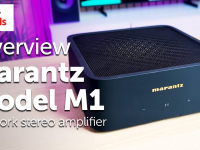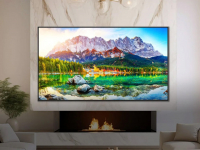
Stand alone Digital-to-Analogue Converters (DACs) first appeared on hi-fi enthusiasts racks back in the early 1990’s, and after all but disappearing from the market during the late nineties into the mid noughties, have seen a huge resurrgence in recent years.
So what exactly is a DAC, and how come they’ve become so popular again?

DACs can connect to a huge range of devices, including your PC or Mac.
Music that is stored digitally, whether files on a PC or streaming device or the now-getting-on-a-bit CD, has to be turned from its original digital form, as 1s and 0s, into an ‘analogue’ form that an amplifier can then pass on to loudspeakers.
This process is done by a DAC or, more accurately, a DAC ‘chip’. Any digital music player that you own, will have one of these chips inside, from a basic DVD player all the way up to a top of the range media streamer. The chip itself, as well as the quality of its surrounding components, will change how you perceive the music. The better the quality and implementation, the better the ability to convey soundstaging – space around instruments, and their placement on a ‘stage’– and, most importantly, bring you closer to the music and the performance. In general, a good digital hi-fi component will already use a high quality DAC, and will be performing to a high standard. However, one of the most increasingly popular music sources could potentially be holding your hi-fi back.
– What Hi-Fi? Sound & Vision magazine.
This is where a standalone DAC comes in to play!
Modern DACs are equipped with a wide range of connections, enabling multiple devices to be plugged in at once. One of the most important of these is the USB socket. Any DAC equipped with one of these is your ticket to high end sound quality from a PC or laptop. Some DACs are even Bluetooth and wi-fi enabled, meaning your tablets and smartphones can benefit too.

Tiny USB DACs like these transform your PC’s sound quality.
Technologies like ‘Asynchronous’ connectivity allow the separate DAC to take over the PC or laptop’s sound management software, meaning that all of the background processes that can affect how a PC sends information (internet browsing, gaming, blogging!!) are handled separately to the audio signal. This allows for better timing, and means all of the relevant information is sent as and when it should be, improving sound quality in the process. You can even get portable DACs using this technology, designed to be plugged directly into a laptop and used with headphones. The results are far superior to simply plugging your headphones into your laptop’s regular socket.
By using better quality parts, clever sound quality processing like upsampling, and bypassing the internal hardware of your chosen player, the stand alone DAC will breathe new life into all of your favourite music, bringing the sound back up to the studio standard.
You can browse our full range of DACs here, or simply pop in to your nearest Richer Sounds store when you can to hear what all the fuss is about!
Author – Chris, Liverpool store.





